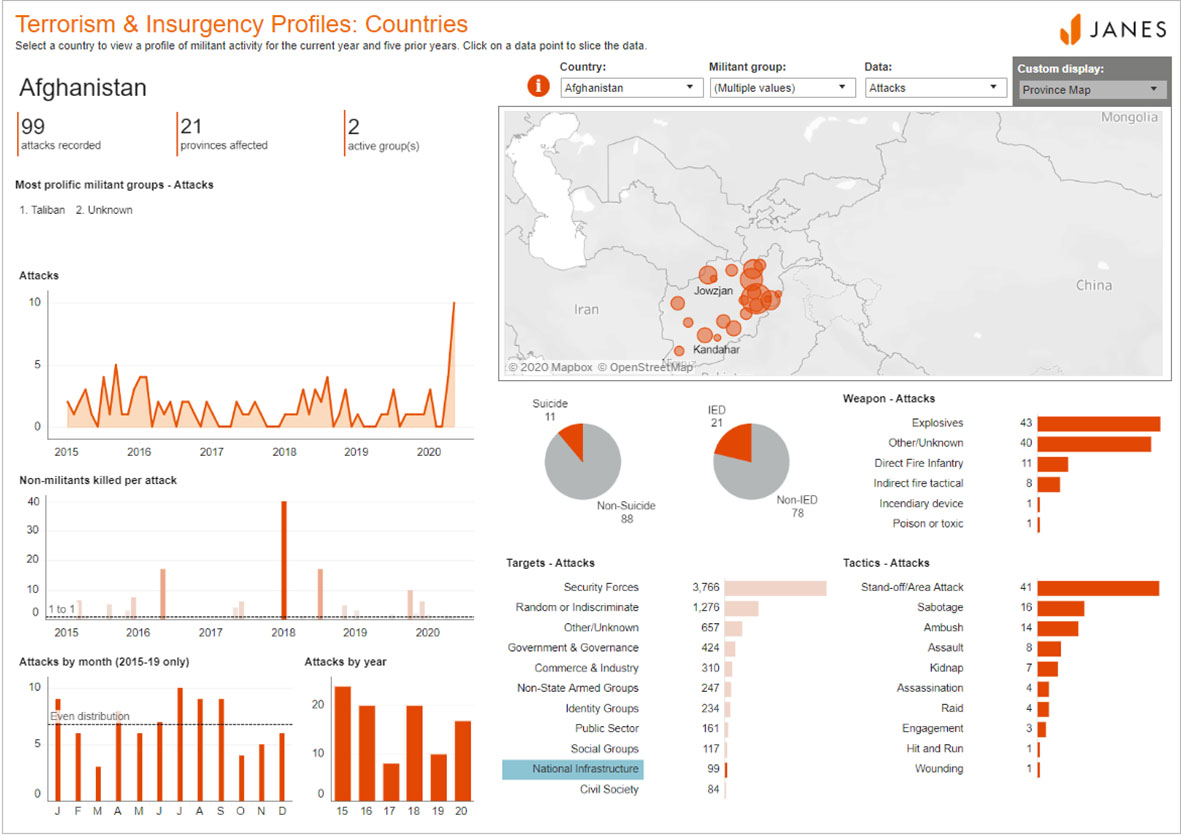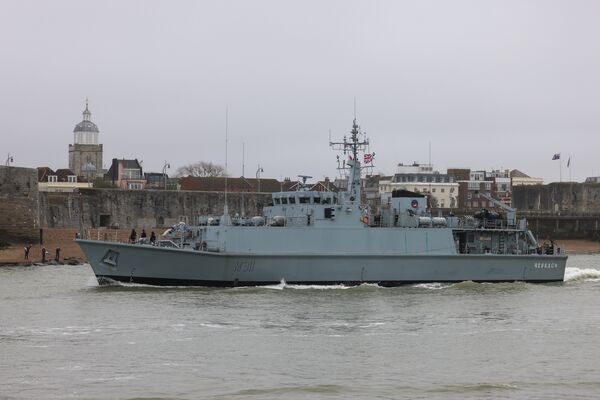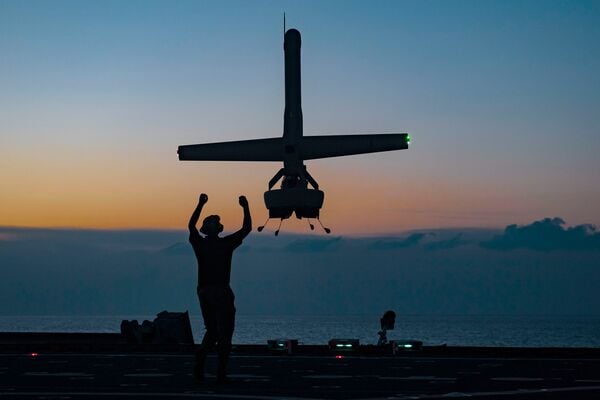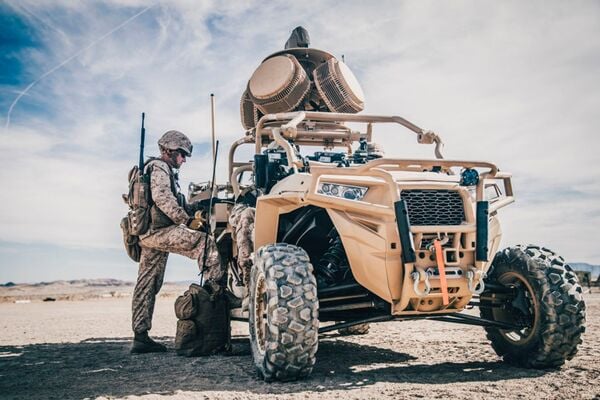- About
- Intara
- Capabilities
- Advisory
- Resources
- News
- Store
Fragile infrastructure challenged by recent spike in militant attacks on Afghan electricity network
23 June 2020
by Gabriela Serrano
JTIC data recorded eight attacks targeting electricity infrastructure across Baghlan, Kabul, and Parwan provinces, all within the first week of May. On 4 May 2020, four workers of state-run utility firm Da Afghanistan Breshna Sherkat (DABS) were wounded when a vehicle-borne improvised explosive device (VBIED) was detonated in the Chimtala area in the capital Kabul. Two days later, in an unidentified location in Parwan province, a senior worker of the same company was killed in a similar attack. As a consequence of these attacks, for which no responsibility was claimed, the east of the country was particularly affected, wherein residences and hospitals – currently overwhelmed by the Covid-19 response –were left without electricity. According to DABS, the recent spate of attacks resulted in damages of over USD10 million.

Ukrainian ex-Royal Navy minehunters to be temporarily based in Portsmouth
19 April 2024
by Kate Tringham


Cherkasy, one of the Ukrainian Navy's two newly acquired ex-Royal Navy Sandown-class MCMVs, is pictured entering Portsmouth Harbour on 11 April ahead of a series of multinational naval exercises. (Crown copyright)
The Ukrainian Navy's two newly acquired ex-Royal Navy (RN) Sandown-class mine-countermeasures vessels (MCMVs) have been temporarily homeported at Portsmouth Naval Base, the RN has confirmed.
The two minehunters, Chernihiv (ex-HMS Grimsby ) and Cherkasy (ex-HMS Shoreham ), arrived at Portsmouth Naval Base on 11 April ahead of a series of multinational exercises.
Previously based in Scotland, the ships will operate from Portsmouth “for the foreseeable future”, the RN said. While stationed in Portsmouth, they will engage in exercises with the RN and the US Navy (USN) in UK waters, helping the Ukrainian Navy to adapt to NATO operations.
Chernihiv and Cherkasy, which were recommissioned into Ukrainian Navy service in July 2023, were donated by the UK to Ukraine as part of the Ukraine Naval Capabilities Enhancement Programme (UNCEP). Ahead of their transfer from the RN, they were overhauled by Babcock at its facilities in Rosyth, Scotland.
Navy League 2024: Unmanned surface and aerial vehicles move from experimental to operational considerations
16 April 2024
by Michael Fabey


The V-Bat UAV, shown here during testing, is becoming the UAV of choice for US forces. (US Navy)
Military planners and operators are beginning to consider unmanned surface and aerial vehicles in a more operational light given recent successes in experiments and in the battlespace, according to defence analysts.
One case in point is the Long-Range Unmanned Surface Vessel (LRUSV) the US Marine Corps (USMC) plans to use as a semi-autonomous vessel for extended travel and transporting loitering munitions that accurately track and destroy targets on sea or land and serve as an intelligence, surveillance, and reconnaissance (ISR) platform, according to Bryan Clark, senior fellow and director of the Center for Defense Concepts and Technology at Hudson Institute.
“Marines are looking at that for unmanned logistics,” Clark told Janes on 31 March in an interview in advance of the Navy League Sea-Air-Space global maritime exposition held from 8 to 10 April in National Harbor, Maryland.
“They want to move materiel between the islands for the MLRs [Marine Littoral Regiments],” Clark said.
USMC plans to buy high-power ULTV variant
11 April 2024
by Aaron Lin


A marine programs a counter-unmanned aircraft system on a Light Marine Air Defense Integrated System (LMADIS) during a predeployment training exercise at Marine Corps Air Ground Combat Center, Twentynine Palms, California. (US Marine Corps)
The Ultra Light Tactical Vehicle (ULTV) programme – a US Marine Corps (USMC) replacement for the ageing Utility Task Vehicle (UTV) – will now include a variant with more exportable power, according to Janes analysis of budget documents.
The fiscal year (FY) 2025 budget request is the first time the ULTV-High Power (ULTV-HP) has funding for procurement, adding up to roughly USD5.99 million for 40 vehicles in that year. USMC justification documents indicate that it “provides exportable electrical power generation in support of the requirements for [the] kill web integrating system”.
JTIC data recorded eight attacks targeting electricity infrastructure across Baghlan, Kabul, and Par...
Latest Podcasts
Iran Israel analysis
In this podcast Janes analysts discuss the Iranian attacks on Israel on the 14 April. They highlight the military systems used by Iran and the performance and impact of these on Israel. They also discuss the implications of this attack goi...
Listen nowJanes Case Studies
Using Janes Intara to build a common intelligence picture: Russian build up on the Ukrainian border
View Case StudyNews Categories
 Security Details
Security Details